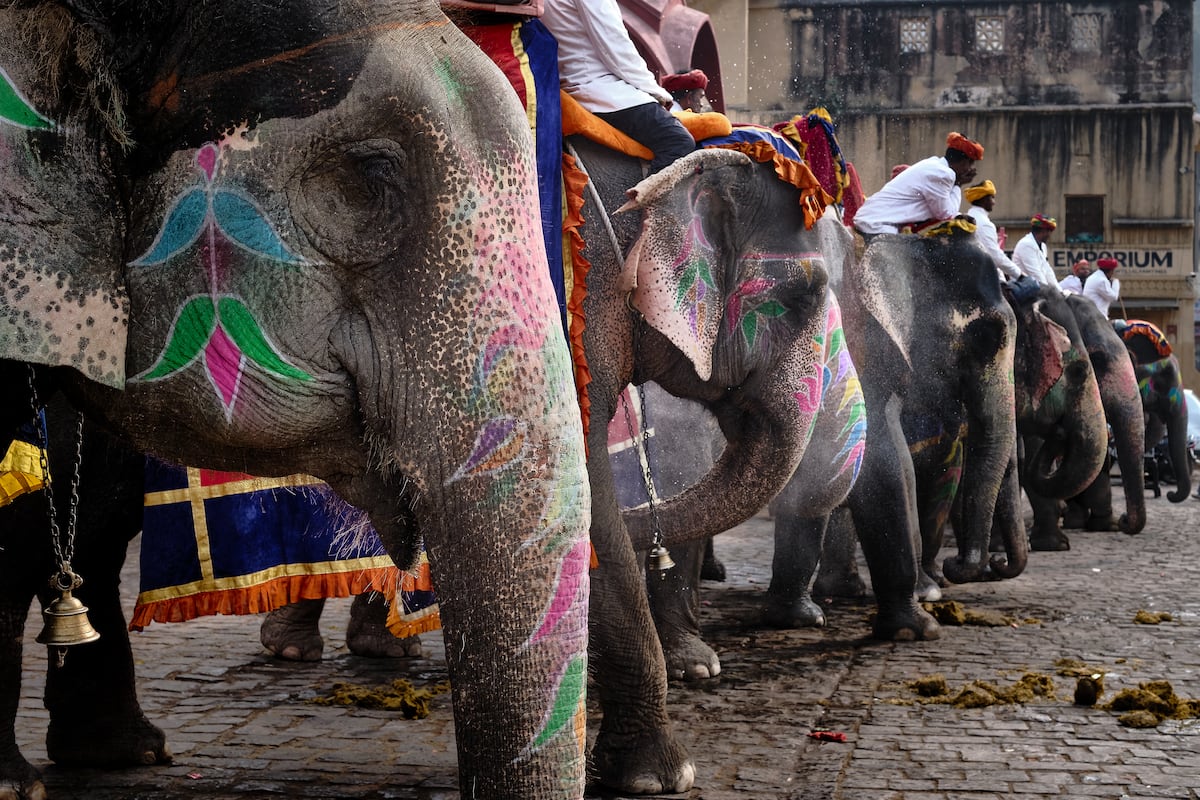
"Traffic comes to a standstill near Amber Palace in the city that shares its name, seven miles from Jaipur in the northern Indian state of Rajasthan, when a chorus of horns announces the arrival of a formation of elephants. They make their way through the tuk-tuks, covered in bridles and brightly colored paint on their trunks and eyes. At this hour, the sun is beating down and the animals are returning to their sanctuaries after a long day's work."
"For centuries, the elephant has been a sacred symbol in India, home to the world's largest population of Asian pachyderms in the world at around 27,000, spread throughout the country. In southern regions like Kerala, it is still possible to find wild herds in the forests, while in areas to the north, such as Rajasthan, elephants only remain in captivity, in protected sanctuaries that provide refuge for animals that have been injured or rescued from poachers."
Traffic frequently stops near Amber Palace as elephants, adorned with bridles and brightly colored paint, travel through tuk-tuks to return to sanctuaries after long workdays. Each elephant carries a mahout who has accompanied it since youth. India holds about 27,000 Asian elephants, with wild herds in southern states like Kerala and captive populations in northern states such as Rajasthan. Sanctuaries originally aimed to protect elephants and local traditions have evolved into tourism centers offering rides, body painting, and feeding. Around 2,700 to 3,500 elephants are in captivity nationwide, with over 75% involved in tourism. The WAP report warns that labeling elephants as domesticated is misleading and distorts biological reality.
Read at english.elpais.com
Unable to calculate read time
Collection
[
|
...
]